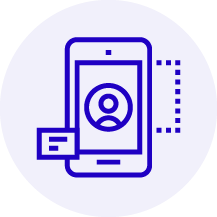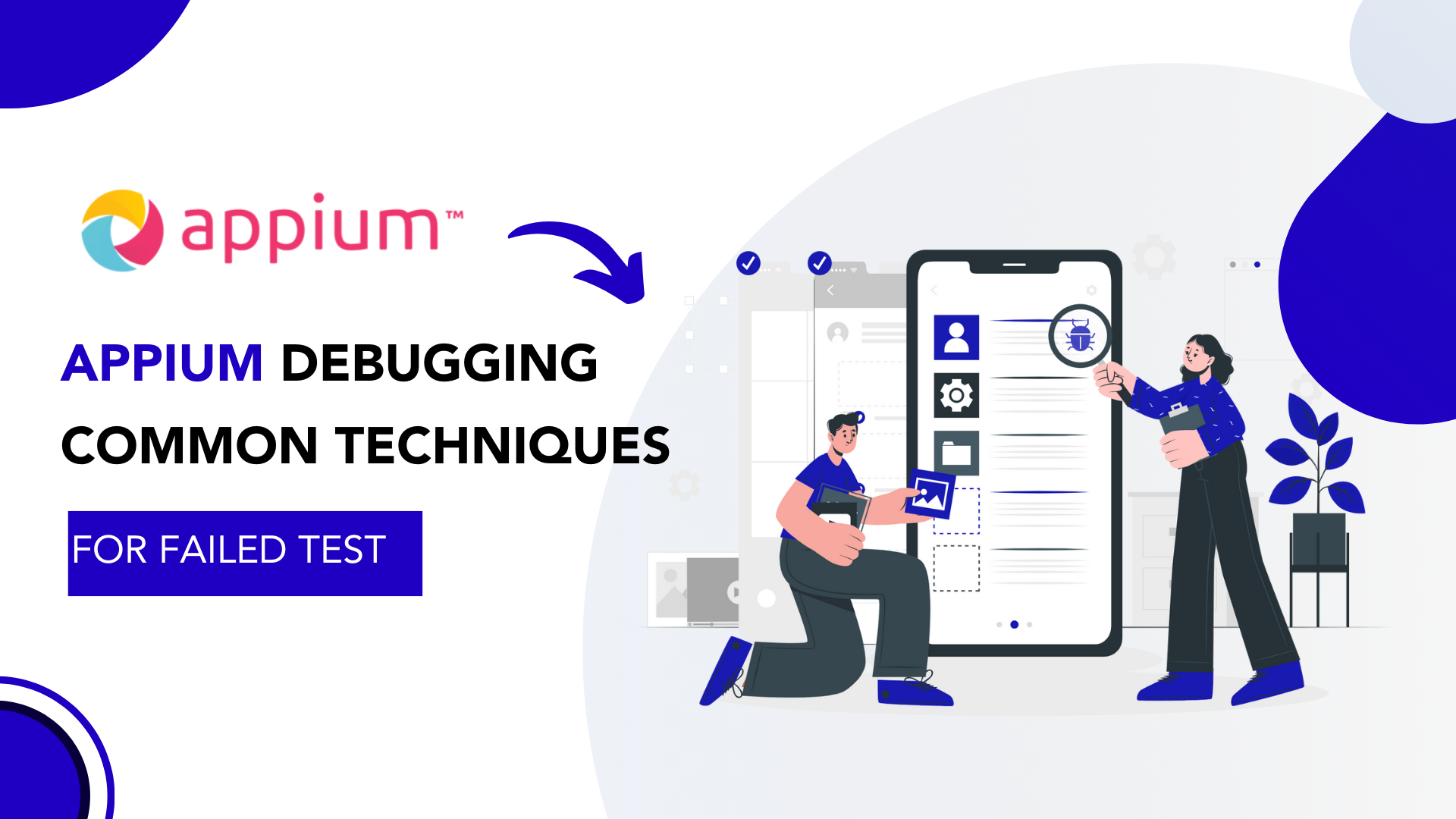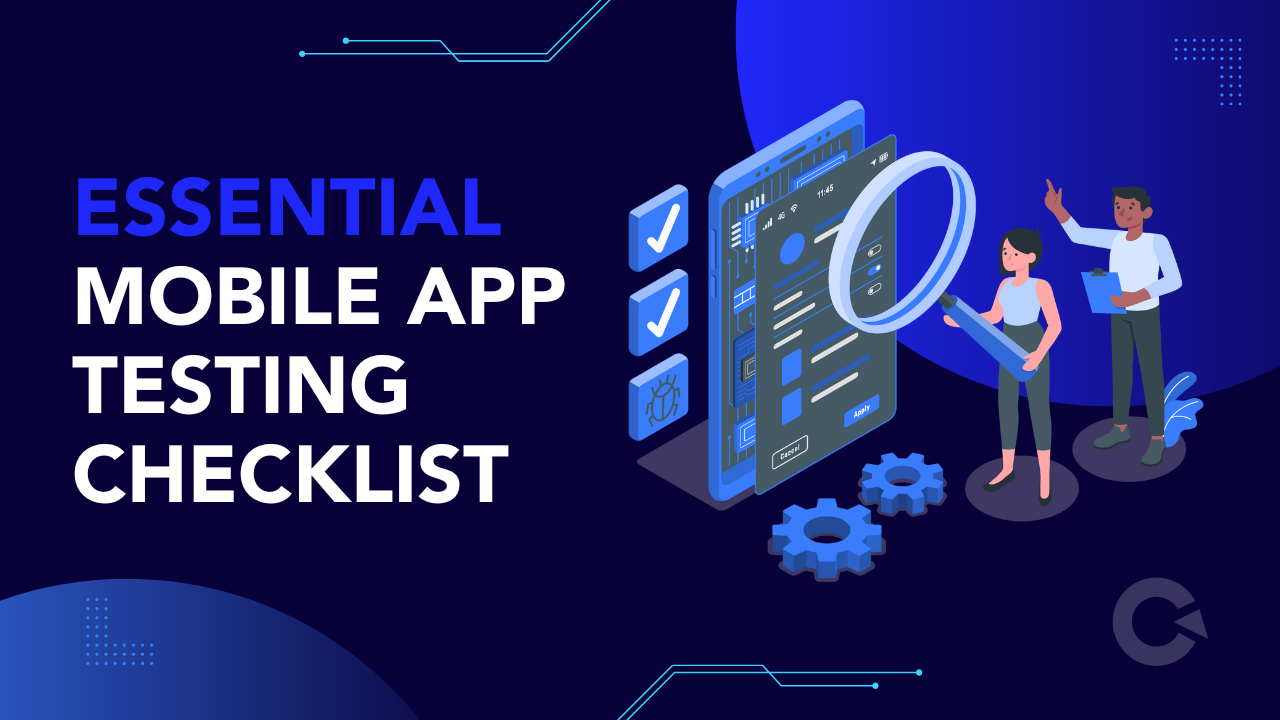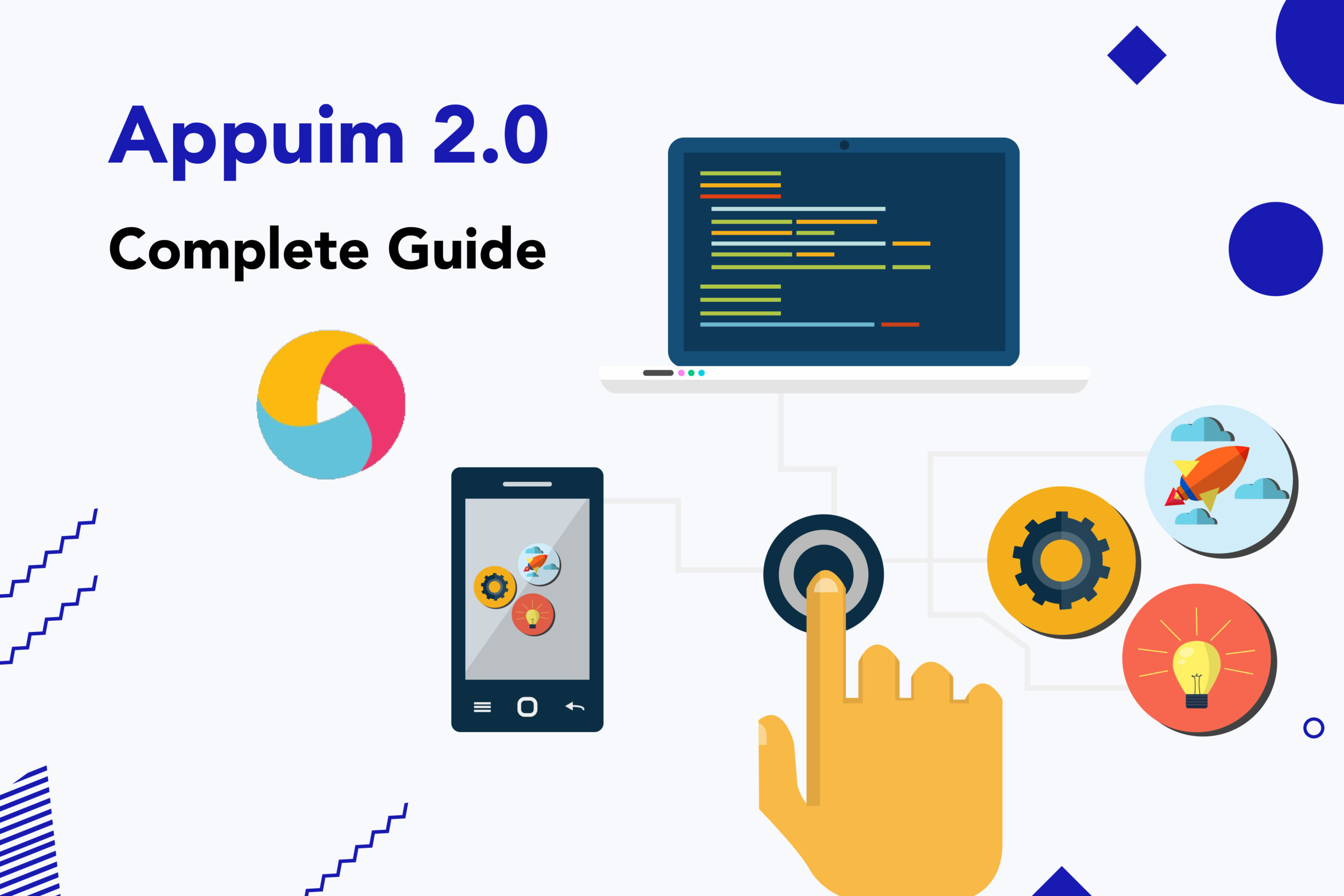
by admin | Apr 8, 2021 | Mobile App Testing, Blog |
Mobile apps have taken the world by storm over the last decade, thanks to the incredible utility they provide billions of users worldwide. They’re exceptionally powerful, easy to use, and accessible from what is essentially a tiny supercomputer that allows people to carry out all sorts of functions. However, due to mobile apps’ high performance, users expect an exceptional experience from all apps on the market. That means companies must devote significant resources to delivering a well-designed application with rich functionality.
While this may sound intimidating, this is where synthetic monitoring comes in handy. When used in tandem with mobile application testing services, it can help you catch bugs and make it easier to provide a much better user experience for your target audience. Here are four advantages of using synthetic monitoring on your mobile application:
It Identifies Issues Before Your Users Find Them
When users find a bug and report it, they fully expect mobile developers to resolve them right away. Although this is normal for most apps, why not take your app to the next level by anticipating these bugs before your users find them? With synthetic monitoring, you can simulate user interactions and identify problems they may encounter. You can then consult with QA companies to address the issues before your users ever get to experience them. They’ll enjoy using your app more, leading to a loyal user base and better ratings on the marketplace.
It Tracks Complex Transactions and Processes
Mobile apps are growing only more powerful by the year, but they’re also getting more and more complex. They can now be used to perform all sorts of functions, like business transactions and processes. Since these capabilities deal with money, you need to make sure that it works perfectly and isn’t prone to bugs. The last thing you want is to hear complaints of users debited for the purchase despite the transaction not pushing through.
Luckily, with synthetic monitoring, you can also reproduce business processes like logging in, browsing, adding items to the cart, and checking out from different locations. You can also use this method to track the app’s performance and compare it across various operating systems to optimize them.
It Ensures Application Updates Function Properly
No mobile app is perfect, which means that it will require an update to improve its security and compatibility with new operating system updates every once in a while. However, some mobile app updates have compromised the smartphone’s performance in some shape or manner because they weren’t tested properly. Without keeping a close eye on these updates, they may cause unintended effects on your users’ smartphones, leaving them frustrated and potentially causing them to delete the app to resolve the problem.
Fortunately, synthetic monitoring is a wonderful way to test out updates thoroughly before rolling them out to the marketplace. That way, you’ll catch any bugs or errors the update may cause and ensure that it functions as intended.
It Benchmarks Testing and Performance Metrics
Lastly, synthetic monitoring helps consolidate your monitoring, testing, and performance metrics in one dashboard. Instead of having to shuttle back and forth to get the data you need, everything will be in one place. It also generates higher-quality data, allowing your team to enjoy a more comprehensive view of the tests you’re scheduled to run on your mobile app.
Conclusion
Test automation services are vital to producing a mobile app that will suit your target audience’s preferences and deliver an exceptional experience. By integrating synthetic monitoring into it, you’ll enjoy a more holistic approach to your app, ensuring that you set it up for success.
Codoid is an industry leader in quality assurance, offering the best app testing services around. We use our Grade-A testing to ensure that your growing product fulfills its highest potential and meets the needs of your end-users. Contact us today to find out how we can help you polish your mobile app!

by admin | Mar 31, 2021 | Mobile App Testing, Blog |
Rigorously testing your mobile application doesn’t just involve testing it multiple times; it also includes various kinds of testing, like exploratory testing. It evaluates the application by exploring numerous test scenarios by requiring a tester to uncover flaws and mistakes through their natural use and report on their experience. It is often summarized as simultaneous learning, test design, and execution.
Exploratory testing allows mobile app creators to identify significant discrepancies quickly, accelerating the app’s development to ensure that it meets the real needs and requirements of end-users. Since it does not create test cases in advance, testers can check the system right away, offering more accurate and real-time insight to uncover defects and kinks that developers must iron out before launching. Here’s what you need to know about exploratory testing for your mobile app:
When Is Exploratory Testing Necessary?
Deploying exploratory testing for your mobile app can help you in various scenarios. For instance, it enables you to understand how your application actually works, what the interface looks like, and how functional it is to your end-users. It is also helpful for identifying the app’s untested, error-prone functionality, allowing you to resolve the issue right away.
You can also use exploratory testing to minimize test script writing, look for more insights, and get diverse feedback from new testers. Overall, if you’re hoping to polish your app and make sure it’s ready to launch on various marketplaces, exploratory testing will help you set it up for a successful release.
What Are the Stages of Exploratory Test Management?
Exploratory test management goes through five stages. The first is the classification of bugs, which categorizes the most prominent errors or defects that the previous testing identified. It analyzes the main causes, detects risks, and comes up with ways to assess the app further.
The second stage is the test charter, which puts forward what to test, the process, and areas that need to be considered. It also factors how the end-user can make the most out of the application.
The third stage is the time box, involving two testers working together to test the application for up to 90 minutes without any interruption. In this stage, testers must react to how the application responds and catalog their experiences for the fourth stage, reviewing the results. Lastly, the fifth stage, or debriefing, compiles the results, compares them with the charter, and verifies the need for more testing.
The Importance of Exploratory Testing
Improving your app with exploratory testing allows you to leverage feedback from real testers, who analyze the application’s essential functions and evaluate how they work to help the end-user achieve their goals. The testers will learn more about the application, uncover defects and errors, and confirm whether the app performs as intended or falls short of the developer’s goals.
Using the information acquired from the testers, you’ll then have to decide whether you require further mobile application testing services to meet your desired results. Without investing in exploratory testing, you may risk a lukewarm reception to your application when you officially launch it, which can result in extensive blowback to your company’s reputation. However, by carefully assessing the app, gathering enough feedback, and employing exploratory testing, you’ll ensure that it is fit to launch and meet your end user’s needs.
Codoid is among the best performance testing companies offering test automation services, ensuring that your app is refined and ready to use by your target audience. Our Grade-A testing ensures that your growing product receives the care, attention, and assessment it needs to put your vision into action. Contact us today to find out more about what we can do for your app!

by admin | Mar 22, 2021 | Mobile App Testing, Blog |
The world is largely digital, and it will only continue to shift towards an almost entirely online landscape as people’s dependency on technology increases. Thanks to the power and accessibility of smartphones, most people use these tiny but mighty supercomputers to complete a host of activities, such as bank transactions, ordering groceries, or even monitoring their physical activity, all made possible by mobile apps.
Mobile applications have transformed thousands of businesses, which have helped them deliver their services more efficiently to their customers. However, given the oversaturation of mobile applications on the market, companies need to step up their game and ensure they create an app that’s rigorously tested and bug-free. Without providing flawless performance and top-tier customer experience, these mobile apps will tank, taking the company’s reputation along with it. As such, you’ll need mobile app testing services to polish your app and make sure it’s the best it can be before launching it on the marketplace.
Here are four factors to consider for mobile application testing:
Carrier Networks and Network Bandwidth
A customer’s Internet bandwidth significantly affects their access to mobile applications. Poor or slow Internet connection negatively impacts the mobile application behavior. When the app takes longer than a few seconds to load, users are more likely to get frustrated and close it. Due to this, you’ll have to make sure you conduct rigorous mobile app testing to review the effects of network interruptions and fluctuations.
Testing your mobile app for interruption means you’ll need to repeat abrupt or unexpected disruption in the app, like a power drain, device shutdown, battery removal, network loss, and an operating system upgrade. That way, you can guarantee that your mobile app supports various scenarios and continues to deliver despite a change in multiple factors.
Excellent User Experience
All mobile apps are expected to present a clean, attractive, and intuitive user interface. It should be simple yet easy to navigate for users; if they have trouble finding their way, they’ll be more likely to drop your app altogether. The best way to test this is to work with mobile testing companies and opt for crowd-testing, which will give you access to valuable feedback from real customers and ensure your app works in real-life conditions.
Speedy Performance
As technology continues to advance at a breakneck speed, so do users’ standards for efficacy and performance. They expect apps to respond and load pages quickly and make efficient use of the device’s memory. The app should also present itself properly on the mobile device, which means you’ll need to test it to ensure compatibility with various devices, operating systems, and screen sizes. By prioritizing performance testing, you can guarantee a superior app performance, making people return to the app and become loyal users. Fortunately, entrusting test automation companies with this task will accelerate the process, giving you a well-performing app that’s sure to satisfy your end-users.
Robust End-to-End Security
Security has become users’ utmost concern and priority, particularly as cyberattacks and security threats continue to rise. As technology grows more sophisticated, so do hackers. Users rightfully demand secure transactions and a strong security system to protect their personal information, so ensure to test your app thoroughly for security. If your app involves payments, be sure to integrate a stable payment system and focus on end-to-end security testing. This type of test will help name threats and vulnerabilities, allowing you to enhance protections and safeguard your users’ information.
Conclusion
Getting your app to perform well on the App Store or Google Play involves more than making your idea come to life. You’ll have to hire mobile app testing services to squash all the bugs and identify all errors that can hamper your app’s chances of success, which will also affect your company’s reputation. By considering these four factors, you’ll have a reliable app that your customers will love.
Codoid is one of the top QA companies offering mobile app testing services. As an industry leader, we are dedicated to providing Grade-A testing to your app, ensuring your product meets your users’ needs. Contact us today to get started on polishing your app to perfection!

by admin | Mar 12, 2021 | Mobile App Testing, Blog |
Smartphones have undoubtedly changed the world. From their humble beginnings as revolutionary mobile phones that can call and text to superpowered mini computers, they have transformed the way people create, consume, and communicate with one another. While smartphones are almost ubiquitous, the number of mobile users is still on the rise: Statista predicts that there will be 7.26 billion users worldwide by 2023. Naturally, that also means that smartphone apps are expected to be more sophisticated and advanced than ever before.
If you’re thinking of creating your own mobile app, you must undergo many different processes to make sure it’s ready for launch. All apps depend on positive user feedback to succeed. Many users won’t hesitate to leave a one-star review if they’re unimpressed by the user interface or run into performance problems. To avoid this sinkhole, you’ll have to invest in mobile app testing services.
What Is Mobile App Testing?
Mobile app testing is the practice of running numerous tests on a mobile application to detect and squash bugs while ensuring that it meets your usability and functionality requirements. It involves several kinds of tests, like functional, performance, security, and load testing.
This type of testing is often incredibly complex, as it tests compatibility with different screen sizes, devices, operating systems, connection types, and other factors. By investing in mobile app testing services, you’ll make sure that your app is of the highest quality, setting you up for success when you release your app through a marketplace. Working with mobile app testing companies is always the best route, as they’ll know everything they need to test your app, ensuring it’s mostly free of issues by launch time.
What are the Qualities of a Five-Star Mobile App?
Intuitive design is always a feature that sets mobile apps from the mediocre ones. Simplicity and ease of navigability are top qualities that users look for in apps, especially since apps don’t come with a user manual, nor are they expected to provide one. Unfortunately, intuitiveness is remarkably difficult to achieve when creating an app. However, mobile testing allows you to test the app’s user experience through all stages of its development, helping you create an app that’s easy to use.
Users won’t settle for an app that doesn’t perform well. In fact, even if you revamp your app’s performance to make it respond with lightning speed, users often won’t give it a second chance. Performance is the bread and butter of app quality, so you’ll need to make sure it performs without a hitch during testing.
Lastly, your app should have an accessible way for your users to provide feedback. Even the best QA companies can’t predict every scenario when testing, which means your users will probably discover bugs themselves. Giving them an avenue to communicate these with you helps establish a relationship between you and your users, building trust in the process.
Why is Mobile App Testing Necessary?
Mobile app testing prevents users from flooding your app with reviews about crashes, poor performance, or even battery drain since it’ll be rigorously trialing your app in various scenarios. With access to such insight before launching your app, you’ll have enough time to resolve these issues, eliminating the chance that your users will run into a subpar user experience and interface.
QA also guarantees that your app functions without running into several glitches under specific performance requirements. As long as your users meet the minimum recommended specifications, such as a particular operating system and hardware, they should be enjoying fast loading times and minimal to no crashes on the app, thanks to rigorous QA. It also helps create loyal users since they have a stress-free experience, helping you build a formidable reputation and access a wider audience.
Conclusion
Failing to plan is planning to fail, including not working with mobile testing service providers who know exactly how to sharpen your app and iron out all the kinks that can upset users. By investing in mobile app testing services, you’ll be on the path to launching a widely successful app.
Codoid is one of the best mobile app testing companies in the world. Thanks to our Grade-A testing built by top QA experts, we leave no stone unturned in ensuring your product meets all end-user needs. We offer automation testing, performance testing, mobile app testing, API and web service testing, and many more. Contact us today to get started on preparing your app for launch!

by admin | Mar 1, 2021 | Mobile App Testing, Blog |
Creating a mobile application is more than just having a wireframe design and making it into a reality. There is a lot to consider when dealing with code and programming because it requires the language to make sense to make things work. Having the design in mind is integral in the app’s overall usability because any software that doesn’t look nice won’t sell. This area is where mobile app testing services come in to ensure that it not only looks beautiful but works like a dream as well.
Software testing companies are a dime a dozen nowadays, but these companies exist for a good reason. Each available mobile testing service provider can offer something new and unique insights into your app’s functionality. These services are run through strenuous A/B testing to ensure each feature you implement works and operates smoothly. Here’s why you need to invest time and resources into tirelessly A/B testing your mobile app:
What A/B Testing Can Do for Your App
Mobile testing services are often needed more than other kinds, as so many people are heavily invested in their smartphones over their personal computers. Almost all software companies try to target the millennials, as they are the prime users of smartphones and their respective applications. Younger individuals are always buying into apps, and they often know straight away when to stop using one because it’s not responsive. This generation of people is often more impatient with technology, so they immediately replace slow and outdated hardware and software.
A/B testing pits two versions of any mobile app side-by-side in front of users to gauge what works and what doesn’t. This method provides valuable feedback that can improve the way these applications run and drive conversions. Overall, testing new features and improvements ensures that people enjoy the functionality, which will let you know what is positively met or rejected by the users.
Apps are Typically Used Once and Never Again
There is only one chance to make a good impression in the vast ocean of mobile apps before someone uninstalls it and looks elsewhere. Newer software development companies have to watch out for apps that aren’t sharpened by release, as these can damage all investments poured into projects. Mobile testing service providers are great companies to invest resources in, as they often have a healthy set of developers who can offer invaluable feedback.
If you’re trying to get people to stay on your app for the long run, you’ll need to do extensive testing to create an app with good usability and functionality. In a market with tons of competition, having a software piece that doesn’t work as intended will damage your company’s reputation. Users pay attention to developers that don’t perform well or don’t bring much to the table, meaning that you’ll want to get it right the first time and continue innovating.
Whether you’re creating social networking apps, mobile games, or other kinds of productivity software, mobile app testing services can be invaluable to your company’s growth. Feedback is the key to improving what you have set out, and if anything doesn’t work in beta testing, you’ll need to iron these out before the public gets to use them.
Conclusion
Testing mobile apps is an essential service to invest in, as creating software is a delicate field that requires accurate coding and programming to get things to work effectively. Even the best companies fall short on the language side of things, which is why mobile testing services can give them the feedback they’ll need to improve their programs.
Codoid is one of the leading software testing companies that can work with various developers to achieve quality assurance in whatever they create. Our engineers can assist startups and other software developers test apps of multiple platforms and provide essential feedback to improve user experience. Contact us to learn more about how we can help you with better mobile app development.
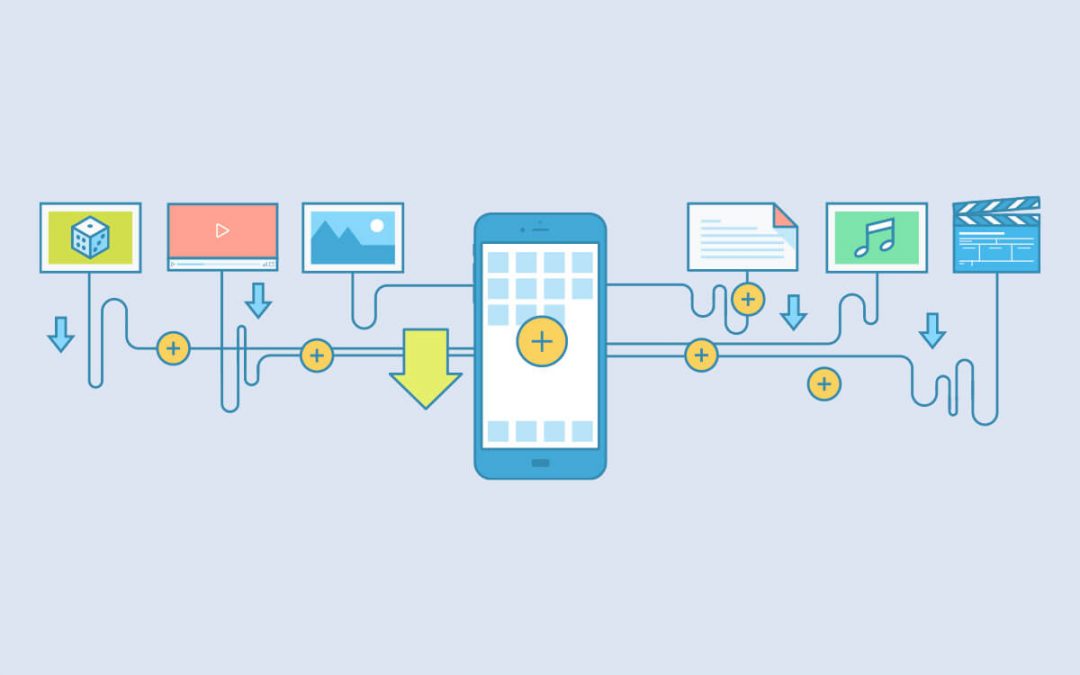
by admin | Feb 22, 2021 | Mobile App Testing, Blog |
Since the introduction of mobile applications globally, users have grown to up to three billion over the years. The number doesn’t seem to be dwindling anytime soon, especially with more companies looking to create their own mobile applications to provide convenience to their clients.
For businesses that want to guarantee their mobile apps work flawlessly, they will need to test them out on both Android and iOS systems to uphold overall user satisfaction. Unfortunately, mobile testing has its obstacles because what may work for one platform may not work for the other!
It will help to hire mobile testing services to guarantee your app is ready for public use. Before you showcase your brand’s new features, keep reading below to find out what exactly a mobile app entails to assure users of its success.
Choosing the Kind of Device to Utilize
The device consumers use to run your mobile app is a crucial part of the process because most users today expect an application to work for almost all platforms and electronic gadgets. If your target audience is a combination of iPhone and Android users, you have to ensure that your app works on the operating systems of both kinds of devices.
However, if you choose to focus on a native application, your duty as a tester involves clarifying to your market your device’s range and the chosen platforms your mobile app can work on. That way, they won’t expect anything more than what you’re already delivering!
Selecting the Operating System Version
Another fundamental part of mobile app testing is selecting the appropriate operating system version it can work on flawlessly. At the same time, your app must be flexible enough to cater to older and newer OS versions because not all your customers will have the same version.
When it comes to relying on mobile app testing companies to try out your application, you could ask them for suggestions regarding the OS versions that can work to support your app. It will help to include older versions to cater to the needs of users with outdated OS versions as well.
Establishing the Proper Screen Size
The screen mode you plan to have for your mobile application is integral! You can choose between landscape or portrait mode, to begin with. While seemingly similar, the two settings offer different results—so getting a mobile testing service provider to figure out the best screen size and orientation is significantly helpful.
Keep in mind that if your mobile app looks seamless on landscape mode, you can’t always expect it to offer the same results when you decide to use portrait mode—and vice versa. In addition, part of improving your user experience is by testing your app on both screen modes and focusing on buttons, scroll bars, and other elements.
Providing Excellent User Experience
Brands launching mobile applications shouldn’t focus on promotion alone. They must also learn to provide a unique user experience that offers a clean and straightforward design. Most of the time, people will appreciate it if they can understand what’s happening in front of them!
Besides focusing on a user-friendly experience, your mobile app should also have a great interface that lets individuals navigate the application without difficulty. An application that puts people in a calm state without struggling is a good sign!
Conclusion
When you’re conceptualizing a mobile application for your company, you must ensure to remember the factors listed above to avoid encountering issues in the future. Besides selecting the right device, operating system version, and screen size, you should also make sure to deliver an outstanding user experience. For best results, hiring a reliable mobile testing company to try out your app is necessary to avoid making room for errors and prepare you for the day you introduce your app to your market.
Are you looking for mobile application testing services to manage your brand’s upcoming app? Codoid strives to guide and lead the Quality Assurance community with the guidance of our professional team of engineers. Get in touch with us today to learn more information about our services!

